Contents
In this tutorial we will proceed to show in an easy way and in detailed steps the way to install the program Screencheat from Steam on a computer with Linux, especially Fedora, although it is also applicable to other distros such as Ubuntu, Debian, Linux Mint, Arch Linux, OpenSUSE or Manjaro (some of the most popular).
Some very popular Linux distros:
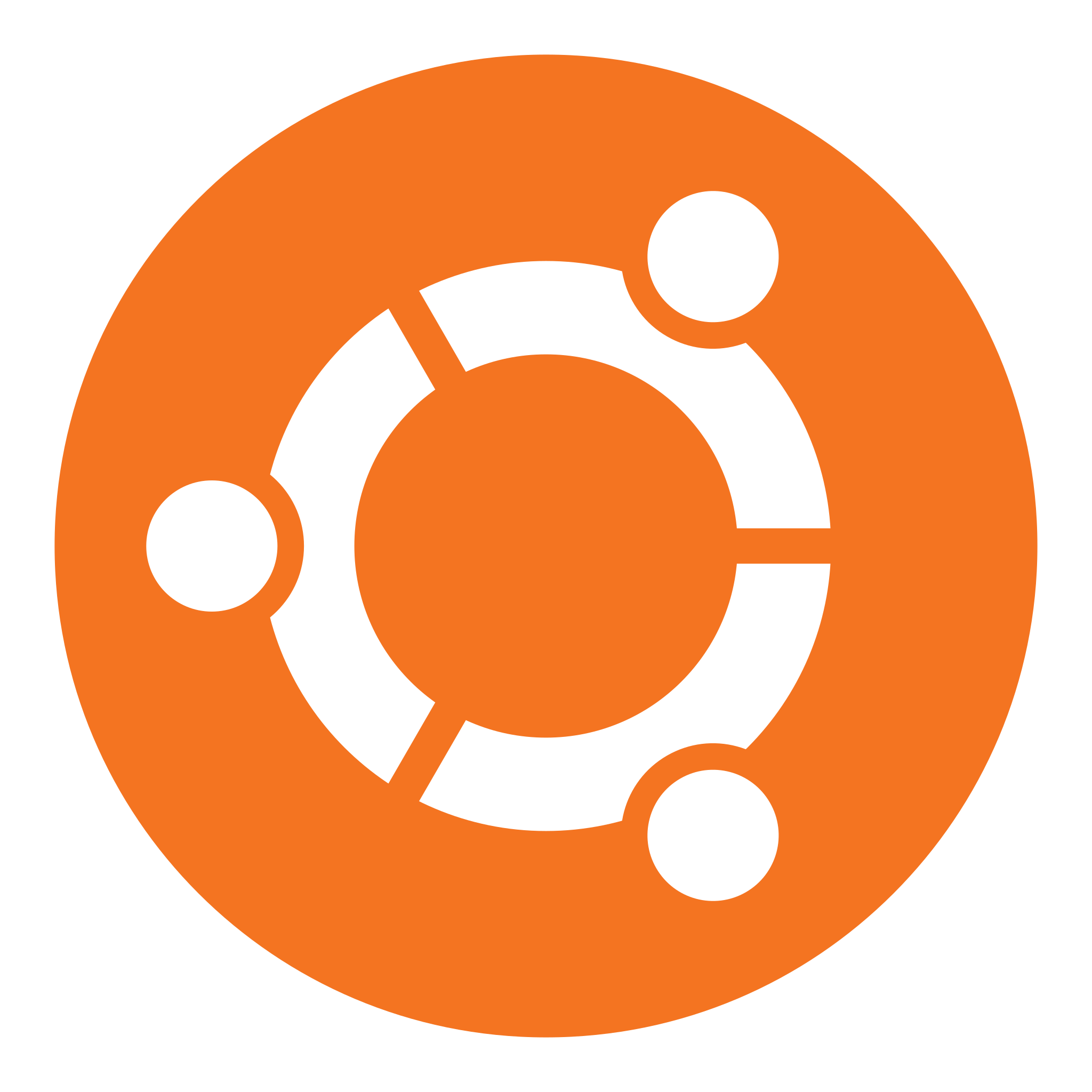 Ubuntu |
 Debian |
Fedora |
 Linux Mint |
 Arch Linux |
 OpenSUSE |
 Manjaro |
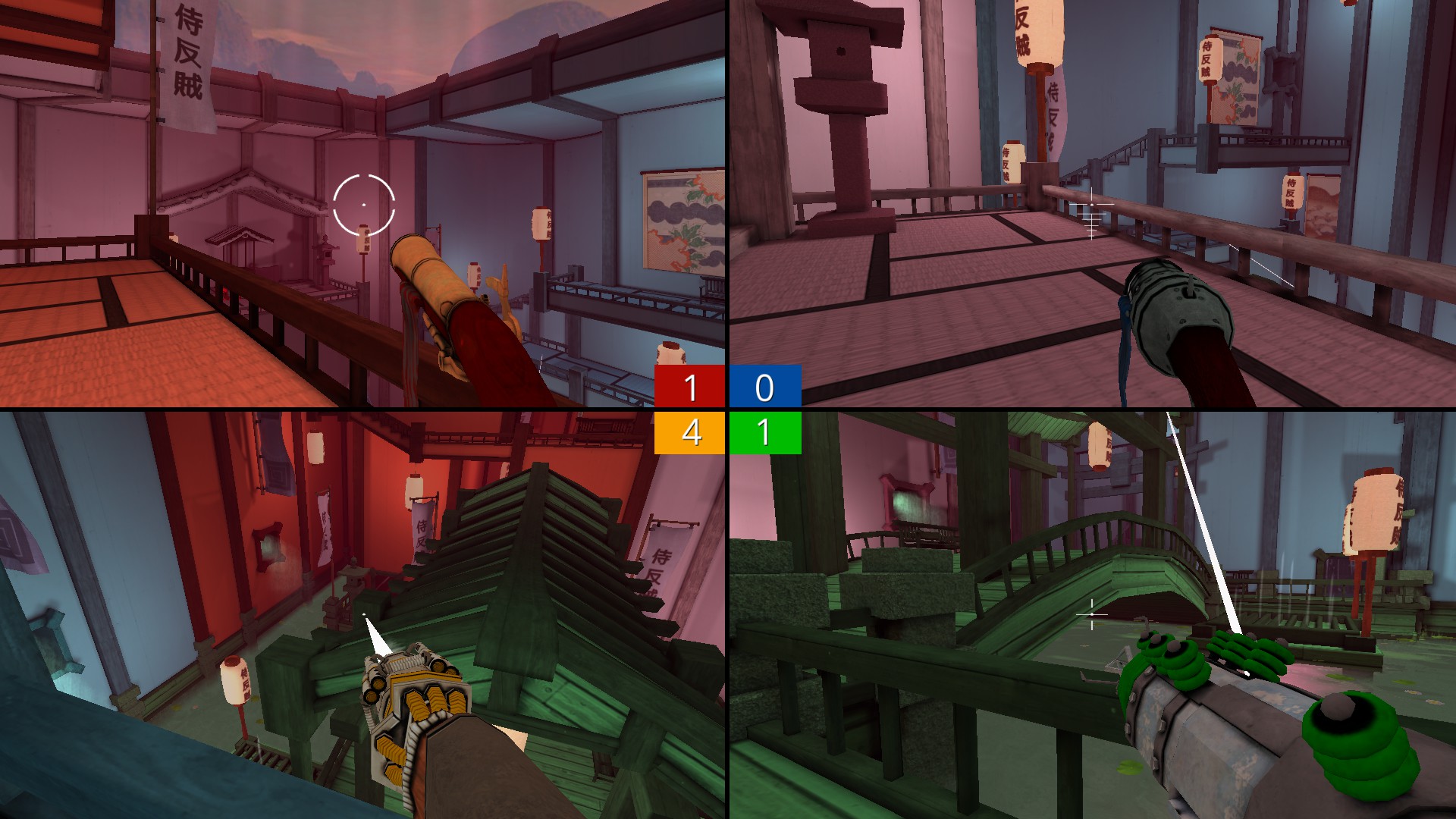
 Steam is a gaming platform, its games can only be played by installing the official Steam client. So first of all you need to have it installed If you dont have it installed In this article I explain how to install Steam on Fedora.
Steam is a gaming platform, its games can only be played by installing the official Steam client. So first of all you need to have it installed If you dont have it installed In this article I explain how to install Steam on Fedora.Although it is also applicable to CentOS and to virtually all distributions in the Fedora family, such as Mageia.
Valve, the company behind Steam, has used Wine to create its own version combining it with its own tools and thus giving birth to Proton. Which we will see in the Steam app under the name Steam Play. Thanks to this thousands of games that are Windows-only become available for Linux both on Fedora and CentOS, Mageia, Ubuntu, Debian, Linux Mint, Arch, Manjaro, etc. And one of those games you can now play on Linux is Screencheat.
![]()
Now that we know…all thats left to say: Welcome to FedGamer.net! a site dedicated to Linux gaming whether its Fedora, Debian, or your favorite distro! Lets go with the tutorial!
How to install Screencheat from Steam on Linux
 Step 1: Launch the Steam application on your machine and log in to your account:
Step 1: Launch the Steam application on your machine and log in to your account: 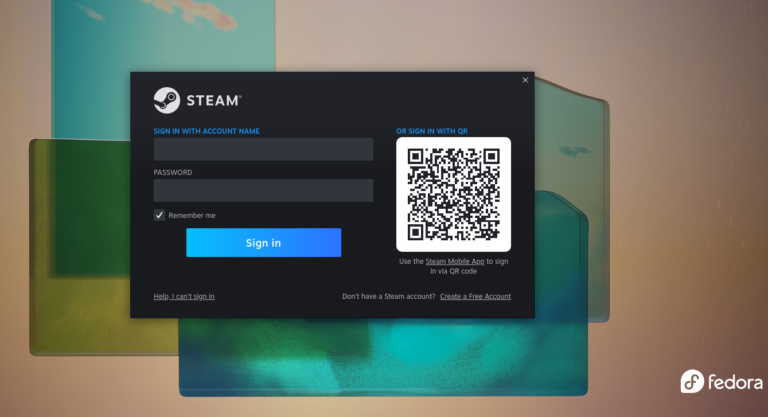
 Step 2: Click on the Steam tab you’ll see at the top left once you’re logged in. When you click it, a list of options will drop down click on Settings or Preferences.
Step 2: Click on the Steam tab you’ll see at the top left once you’re logged in. When you click it, a list of options will drop down click on Settings or Preferences.

 Step 3: When you click on Settings, a window with several options will open on the left the last is Steam Play. Click it and you will see the following:
Step 3: When you click on Settings, a window with several options will open on the left the last is Steam Play. Click it and you will see the following:
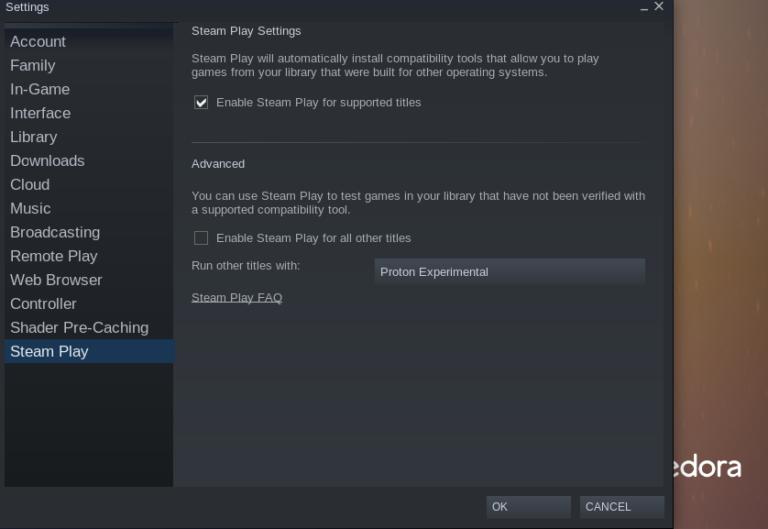
As you can observe the first checkbox that says Enable Steam Play for supported titles is enabled if it isn’t, click to enable it. And further down where it says Proton Experimental click it and select the latest version, youll see the first number determines the version and as you can see in this screenshot, were at 7. Finally, check (if it isnt) the checkbox that says: Enable Steam Play for other titles.
Finally click the OK button. Attached here is another screenshot:
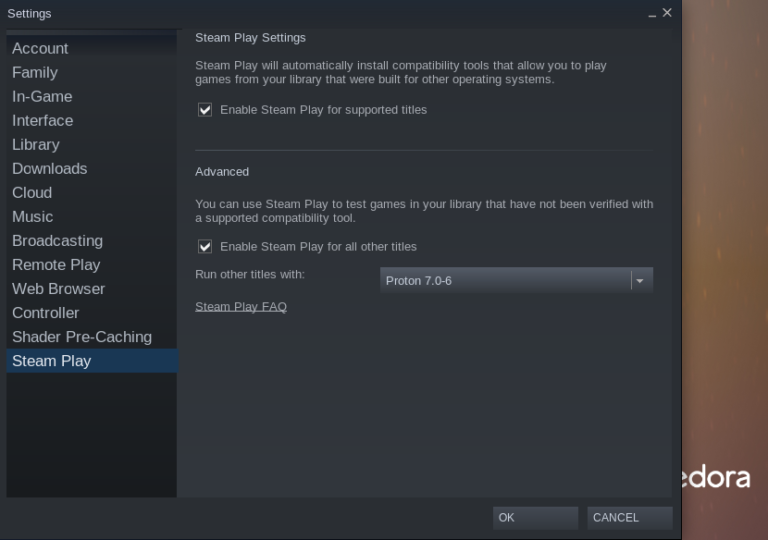
Note: Dont use the experimental version, because although it’s the newest, being experimental it can contain bugs and its best not to use it except if a game doesn’t work as a last resort.
 Step 4: Once Proton is enabled, the Steam app may restart automatically. If it doesn’t, close the application and reopen it. When it restarts, Proton packages usually download, and if it doesn’t then, it will in the next step.
Step 4: Once Proton is enabled, the Steam app may restart automatically. If it doesn’t, close the application and reopen it. When it restarts, Proton packages usually download, and if it doesn’t then, it will in the next step.
 Step 5: Go back to the Steam Library, or Library, and there you’ll find your games. Now the titles originally for Windows will display like this:
Step 5: Go back to the Steam Library, or Library, and there you’ll find your games. Now the titles originally for Windows will display like this:
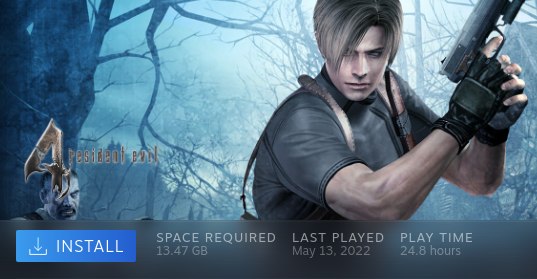
In place of this:
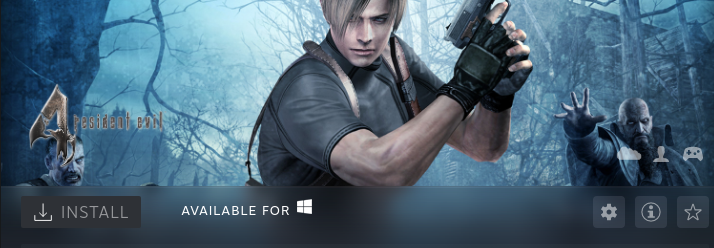
In case you didn’t notice the subtle difference now the Install button is blue because it’s available for our Linux OS, in this case Fedora.
 Step 6: Click Install. If the packages didn’t download before, it may start downloading Proton now, so be patient. After that, the game will download and install if it doesn’t, click Install again.
Step 6: Click Install. If the packages didn’t download before, it may start downloading Proton now, so be patient. After that, the game will download and install if it doesn’t, click Install again.
And that’s it, you just need to follow the installation instructions you see in Steam. When the box shown in the next screenshot appears, if we choose Create Desktop Shortcut it will create a shortcut, like Firefox or LibreOffice. And if we don’t check that option, we’ll have to open Steam each time we want to start the game (which I find tidier, but it’s a matter of preference).
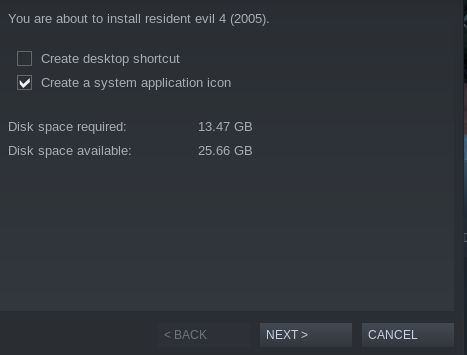
 Step 7: Play!
Step 7: Play!
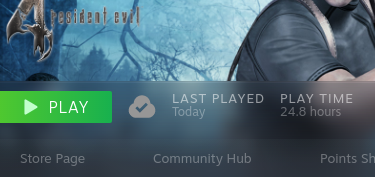
Is the game Screencheat compatible with Linux?
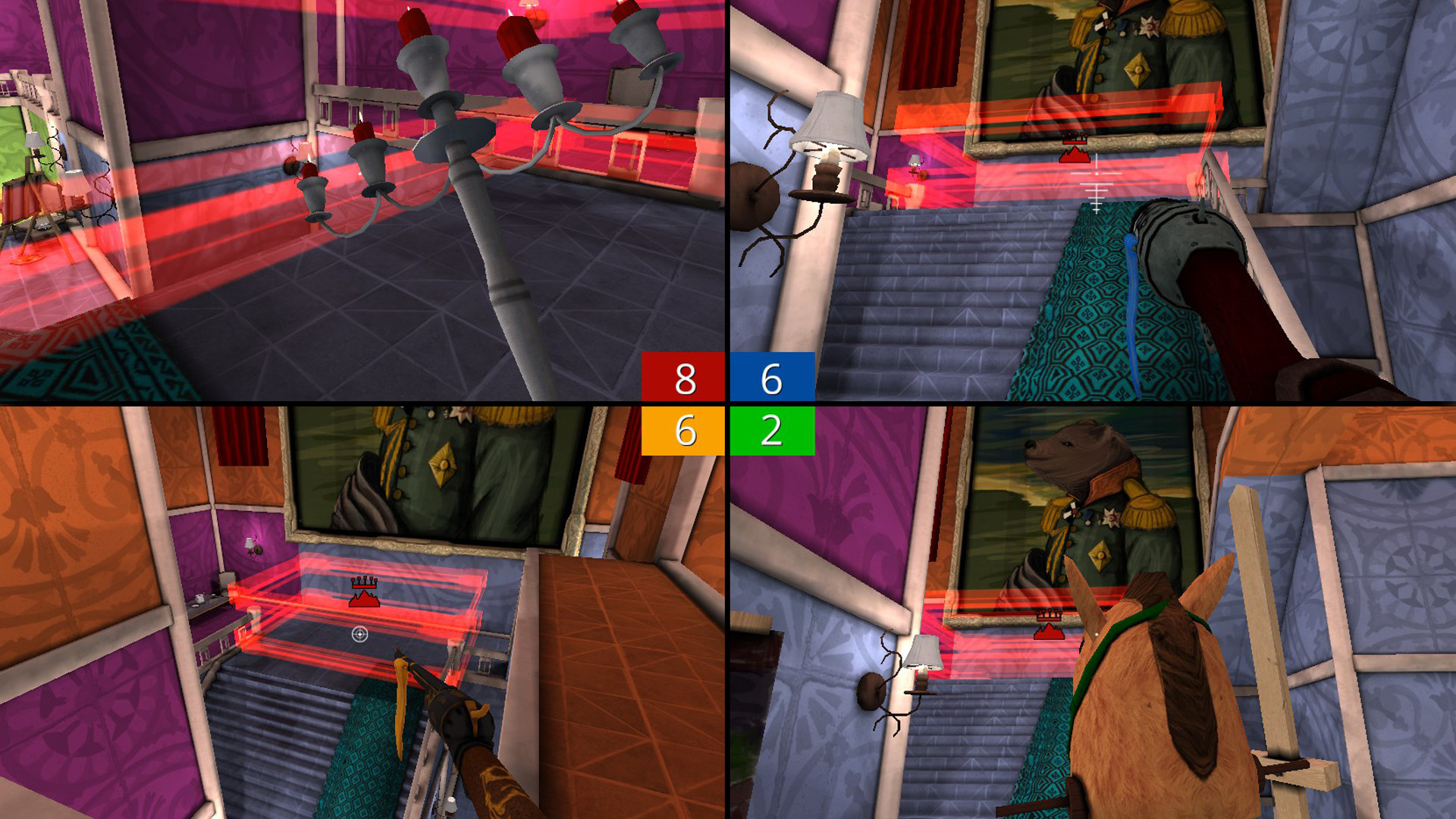
One could say yes, using Proton but I must say that it is not always perfect the conversion of a video game originally for Windows to Linux. So although in almost all cases it runs without issues there will also be exceptions in some cases. Unfortunately, you cannot know beforehand if an error will occur, in my experience it normally doesn’t, I never had that problem, but it could happen.
To make sure before installing, there is a way: resort to the community, that is, other users experience. The community has set up a site where users leave their feedback on each game mentioning their OS, hardware components, etc. At a glance you can see if someone with your distro, be it Fedora, Ubuntu or any other, had a good or bad experience.
The site Im talking about is ProtonDB and to quickly check if a Windows Steam game works on Linux, the best thing is to look at the rating:
- Native: It’s a native Linux game, created specifically for it.
- Platinum: Works perfectly on Linux.
- Gold: Works very well, with maybe a minor fix easily solvable.
- Silver: Works with a minor issue that doesn’t impair gameplay.
- Bronze: Works, but sometimes stops or has major errors.
- Borked: Doesn’t work: won’t start or crashes too much.
Here’s a screenshot as an example. As you can see, for Resident Evil the category is Platinum:
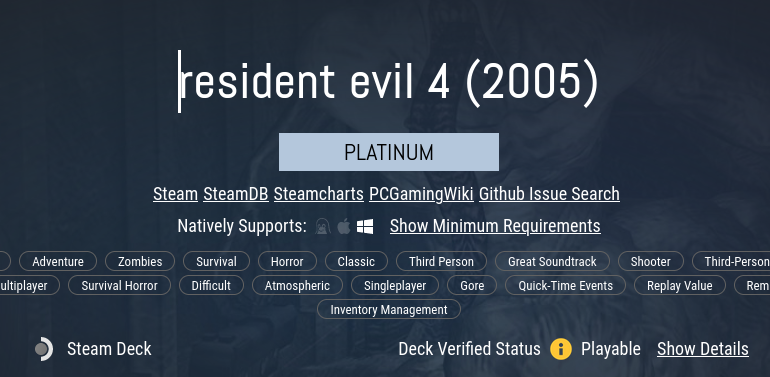
From Silver to Platinum indicates an excellent compatibility level. Another thing we can do is look at comments from users with the same distro as ours. In any case, you can check the compatibility of Screencheat on Linux here:
Supported languages: Languages supported by this video game:
- 🇪🇸 Spanish, 🇬🇧 English, 🇫🇷 French, 🇩🇪 German, 🇮🇹 Italian, 🇯🇵 Japanese, 🇨🇳 Chinese
- 🇷🇺 Russian, 🇰🇷 Korean, 🇧🇷 Brazilian Portuguese, 🇵🇹 Portuguese, 🇵🇱 Polish, 🇹🇷 Turkish, etc.
Official video:
Official website: http://screencheat.com
Metacritic Score
Where to buy the game Screencheat at a low price
There are several retailers where you can buy cheaply Steam games, below I mention two of the cheapest and most reliable:
Once youve purchased the game, you just have to redeem the code in your Steam account and you’re set.
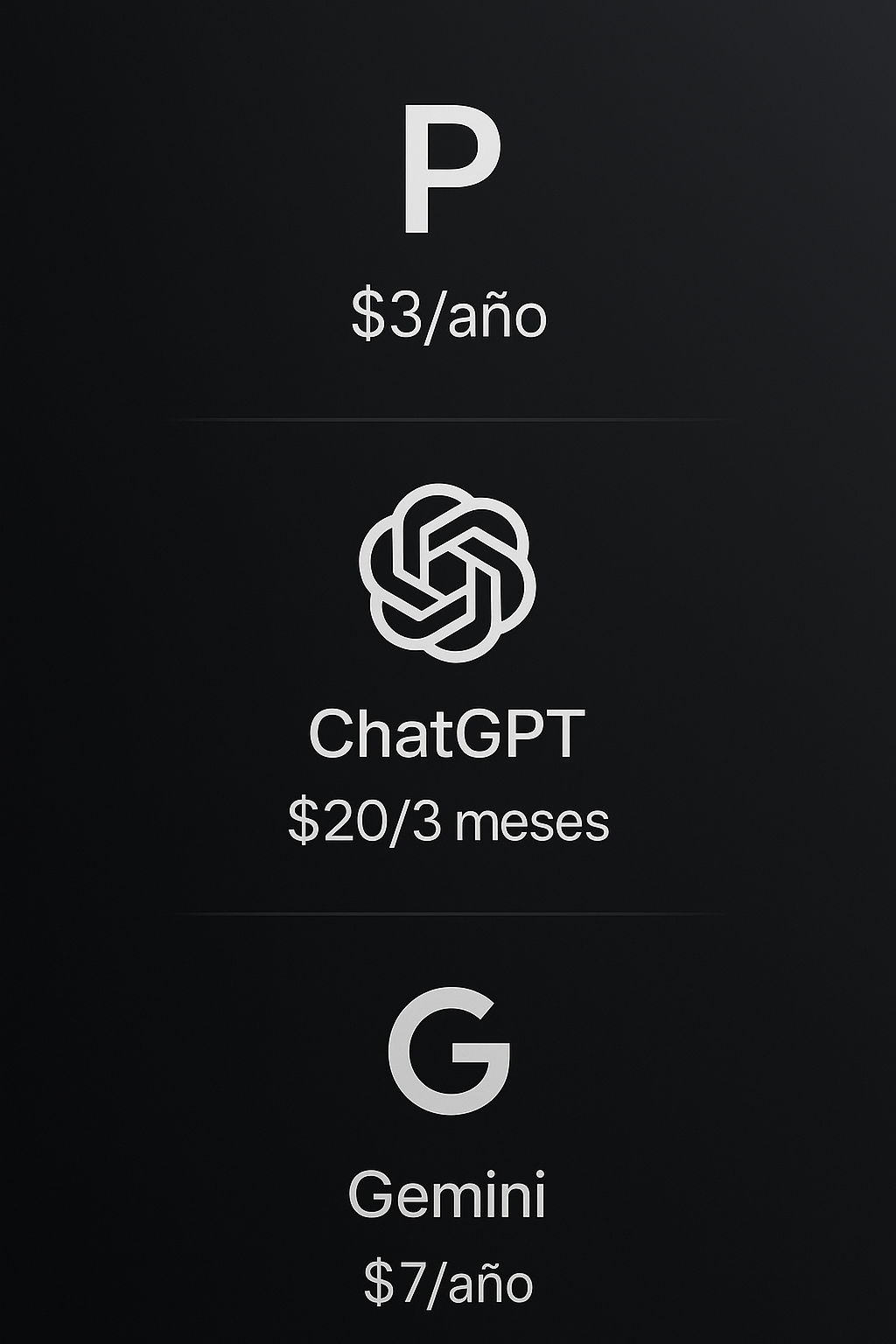

Be the first to leave a comment